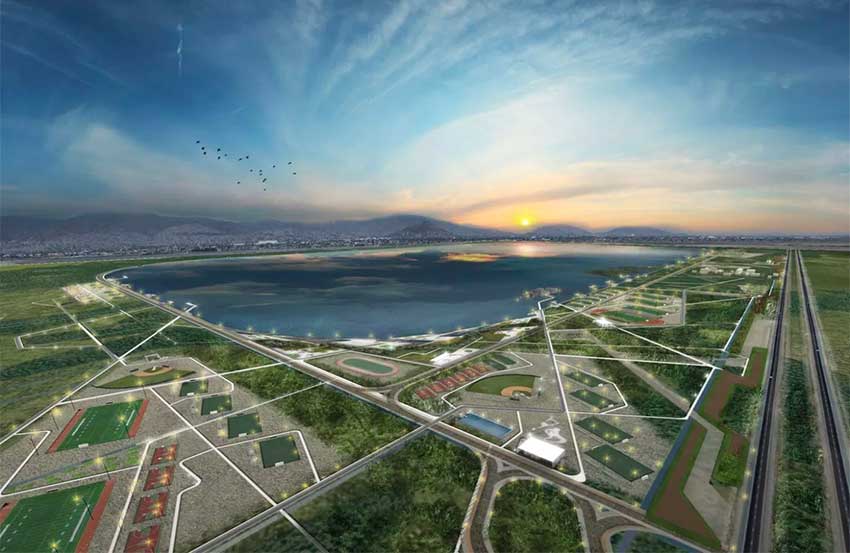RIO DE JANEIRO, BRAZIL – Bright green stalks of weeds are sprouting from the ground where planes were supposed to take off at a new Mexico City airport, as officials let nature take over in their bid to transform the marshy swath of an ancient lake into a giant park.
The ghostly skeletons of a partly built control tower and flight terminal are recognizable as the work of Norman Foster, the British architect commissioned by Mexico’s last president to build a futuristic international airport at a cost of about US$13 (R$71) billion on 4,800 hectares of land just east of the capital.
Upon taking office in December 2018, President Andres Manuel Lopez Obrador axed the project, citing the results of an informal referendum, after arguing it would be costly to prevent sinking on the waterlogged soil.
Instead of the slick design from Foster, whose award-winning glass and steel web-like buildings dot the globe, Lopez Obrador opted to expand an existing military airport.
A huge ecological park is to be developed on and around the site of the abandoned Mexico City airport project, and will cost just over US$808.7 million, the National Water Commission (Conagua) has determined.
According to an investment proposal recently submitted to the Ministry of Finance, development of the 12,225-hectare Lake Texcoco Ecological Park (PELT) will begin in 2021 and finish in 2028.
The total cost of the project will therefore be at least US $1.4 billion (R$7.4 billion).
Referring to the grandeur of the project and its waterways, President López Obrador said earlier this month that the ecological park will be like a “new Tenochtitlán,” the water-rich capital of the Aztec empire that once stood on the land where Mexico City is now located.
Iñaki Echeverría, an urbanist and architect who designed the PELT, said last week that one area of the park will be opened to the public in 2021.
The ancient lakebed site will be part of the PELT’s 4,875-hectare Zone II.

The zone, much of which will be reforested, will feature three different parks with gardens, public spaces, walking paths, sporting facilities and parking lots, according to a cost-benefit analysis.
Across the PELT’s four different zones, a total of eight separate parks are slated for development. Zone I will encompass six restored lakes and lagoons including Lake Nabor Carillo while Zone III will include three more lagoons.
Zones III and IV will set aside land for agricultural purposes and a solar farm is slated to be built in the former.
The government expects that the PELT, which will dwarf Mexico City’s 678-hectare Chapultepec Park, will lead to a reduction of respiratory illnesses among local residents and generate a range of other environmental benefits including improved regulation of water resources.
It also expects that the project will add value to real estate in six México municipalities and two nearby boroughs of Mexico City itself.
Conagua said the PELT will “promote inclusion and social cohesion” in the surrounding areas and “generate identity and pride” among people who live in the eastern region of the Valley of México.
Architect Inaki Echeverria aims to open a portion of the park by March next year and offer full access by 2024.
“The restoration began the moment the construction stopped. This shows nature’s incredible resiliency,” he said.
During a visit last week, a moat of green water had risen around a flying-saucer-like building where a control tower juts 20 metres high, less than a third of its intended height.
Birds glided in a pond beneath columns of crisscrossing steel bars that were meant to become a terminal greeting some 70 million passengers a year. The steel will be sold as scrap.
Conservation efforts in the area date to the 1970s, when the government grappled to contain dust storms that swept over Mexico City from the dry lake basin.

